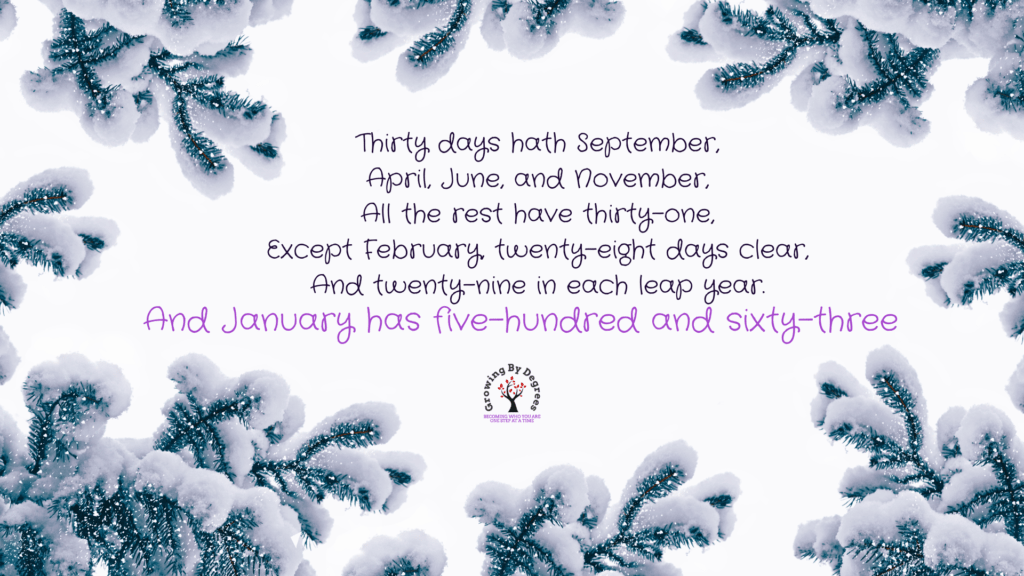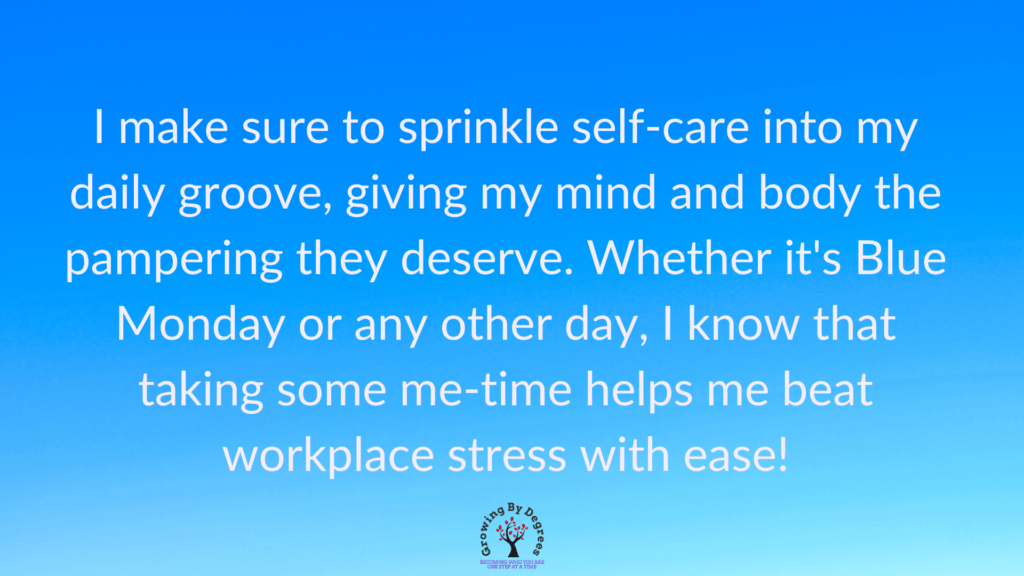In this blog post, we’ll explore the the Blue Monday myth, and provide you with tips to boost your mood.
Is Blue Monday the saddest day of the year?
The third Monday of the year is commonly known as Blue Monday. It falls in the middle of January and is considered to be the saddest day of the year. The holiday glow has worn off, the New Year bonhomie has gone, and you’ve already broken at least one of your new year’s resolutions. Added to this, at least one of your friends is doing a cleanse, dry January or no spend January, and the weather outside is cold, snowy and/or just depressing.
So it’s not surprising that the January slump presents itself as a bit of a downer with feelings of low spirits, occasional sadness, a temporary lack of motivation, fatigue, and a dip in energy levels. It’s that time of year when Seasonal Affective Disorder (SAD) tends to peak, potentially bringing on some challenging moments of depression during the darker months. Not everyone who gets down at this time of year has SAD though. SAD lasts for months, not for days or even a couple of weeks,
More reasons for the January slump.
- The holidays are over, meaning it’s back to the daily grind for many.
- The festive decorations are all gone or put away. Traditionally in our family they had to be down by January 6th (Twelfth Night) or you would have bad luck the rest of the year.
- You may be beating yourself up, because you didn’t accomplish everything you wanted to over the holiday. In the UK everything pretty much shuts down for the week between Christmas and New Year so it’s often a 2 week break.
- You were offered a lot of food and drink, and now the scales are reminding you of that.
- The credit card bills start arriving.
- It’s winter and the days are short, it’s cold, and there’s a lot of rain. Spring is coming but it won’t be here for a couple of months.

The Blue Monday Myth.
You may be surprised to learn that the concept of Blue Monday was actually created as part of a marketing campaign back in 2005. Dr. Cliff Arnall, a researcher at Cardiff University, Dr. Arnall created a mathematical formula that took into account factors such as weather, debt, time since Christmas, and motivation levels to determine the most depressing day of the year. However, many experts argue that this formula lacks scientific validity and is simply a way to sell products and services during a typically slow time of the year Since Dr. Arnall created the concept of Blue Monday as part of a marketing campaign for a travel company I am inclined to agree with them..
Mental health.
When it comes to mental health, it’s important to rely on evidence-based research and the expertise of professionals. According to mental health experts, the idea of a specific day being the saddest of the year is oversimplified and misleading. Nevertheless while the formula has been criticized as being unscientific and pseudoscience, it has sparked discussions around mental health and the impact of seasonal changes on our emotions. However, mental health struggles can not be reduced to a single day of the year and one should beware of nominative determinism which is when we are read something and notice the symptoms. In this case because we are told that it is Blue Monday, it might actually increase feelings of depression in some because we are supposed to feel ‘blue’
Many people use Blue Monday as a reminder to ‘check-in’ and take care of their mental health and seek support if they are feeling down.
Commercial Exploitation.
Another criticism of Blue Monday is that it has become more commercialized, with companies using it as a marketing opportunity. This can be seen as insensitive to those who suffer from depression and mental health issues. Some have also argued that the focus on Blue Monday detracts from the larger issue of mental health, with people only paying attention to their own mood on one day of the year instead of seeking help and support when they need it.
Tips for depression at work.
If you find yourself at work during Blue Monday then try some of these ideas.
- Share a positive or inspirational affirmation with your colleagues.
- Start or take part in a wellness challenge
- Set yourself firm work-life boundaries. If you normally eat lunch at your desk then don’t. Go for a walk instead. I once had a manager who insisted that you spent at least 30 minutes away from your desk at lunchtime each day. It was some of the best work advice I have ever received.
- Don’t compare yourself to your colleagues. Instead make your own list of priorities and work through them.
- Take the opportunity and educate your colleagues and managers about S.A.D.
- If you are not quite ready for that then talk to your manager or HR and find out if there any accommodations that could be made.
The SAD Checklist is a comprehensive compilation of tried-and-tested tips and techniques specifically designed to alleviate the symptoms of seasonal affective disorder. Whether you’re experiencing low mood, fatigue, or a lack of focus, this checklist is your roadmap to brighter, more fulfilling days.

Dealing with stress.
Take mini breaks during the day to focus on the positives in your life. You can do some deep breathing, or relaxation exercises. Do some stress relieving exercises such as tensing and relaxing each muscle in turn.
Check your face. No I don’t mean go and look in a mirror, but feel what is happening.Start at the top and work down. Do you have a headache? Are you frowning unconsciously, is your brow furrowed (tense). Are you clenching your jaw or pursing your mouth. Do you feel a tightness in your neck and/or shoulders?
Some quick facial stress-relief exercises you can try. Open your eyes wide and relax them quickly a couple of times, this will tense and relax your brow. Find some oil or even moisturizer and gently rub it around your face as you massage your cheeks and jaw, then open your mouth wide as if you were yawning and relax a couple of times. Or if you are not feeling shy you can try doing a fun yoga technique called Lion’s Breath.
I carry my stress in my upper shoulders but I used to be a jaw clencher and this final tip is my favourite. Put the tip of your tongue on the roof of your mouth just behind your top teeth and your teeth will naturally part That’s it! It sounds so simple but it relaxes the mouth and prevents you from clenching. Make it a conscious effort to do this each time you find yourself clenching or grinding your teeth and you will be amazed how quickly it works. It is practically a habit with me by now.
Tips for Boosting Mood.
- Go outside: Even on cloudy days, natural light can have a positive impact on your mood. Try to spend time outdoors, especially during the brightest parts of the day Take a walk, go for a hike, or simply sit in a park and soak up the surroundings.
- Light therapy: Consider investing in a light therapy box, which mimics natural sunlight. Using it for just 30 minutes each morning can help regulate your body’s internal clock and alleviate symptoms of S.A.D.
- Stay active: Regular exercise releases endorphins, which are known as feel-good hormones. Find an activity you enjoy, whether it’s dancing, yoga, or simply taking the stairs instead of the elevator.
- Connect with others: Social support is crucial for mental well-being. Reach out to friends and family, join a support group such as this one on Facebook
- Practice self-care: Take time for yourself and engage in activities that bring you joy and relaxation. This could be reading, taking a bath, practicing mindfulness, or pursuing a hobby.
The SAD Checklist is a comprehensive compilation of tried-and-tested tips and techniques specifically designed to alleviate the symptoms of seasonal affective disorder. Whether you’re experiencing low mood, fatigue, or a lack of focus, this checklist is your roadmap to brighter, more fulfilling days.
Remember, Every Day Matters.
While Blue Monday may be a myth, it’s essential to remember that every day counts when you’re managing S.A.D. Don’t wait for a specific day to prioritize your mental health. Seek support, engage in self-care, and be proactive in managing your symptoms throughout the winter season.
Conclusion.
Blue Monday may not be the saddest day of the year, but for individuals with seasonal affective disorder, the winter months can be challenging. By understanding the myth behind Blue Monday, listening to mental health experts, and implementing strategies to boost your mood, you can take control of your well-being. Remember, every day is an opportunity to prioritize self-care and find joy even in the midst of seasonal difficulties.






